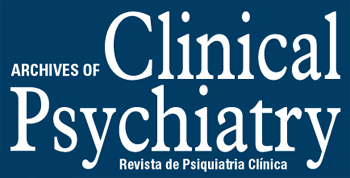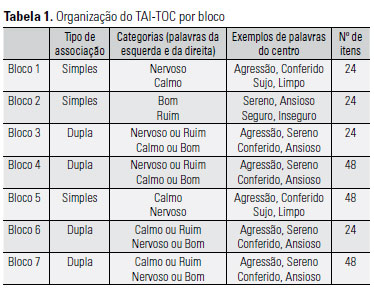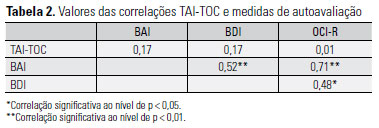BACKGROUND: Traditional assessments of obsessive-compulsive symptoms, based on patients' introspection, are subject to several factors, including the levels of insight presented by them. OBJECTIVES: In this study, our goal was to assess the internal consistency and clinical correlations of a test that seeks to identify the existence of an implicit cognitive bias in patients with obsessive-compulsive disorder (OCD). METHODS: 40 patients with OCD performed the implicit association test for OCD (IAT-OCD) and answered three instruments of self-assessment [Beck Anxiety Inventory (BAI), Inventory, Beck Depression Inventory (BDI), Obsessive-Compulsive Inventory-Revised (OCI-R)]. RESULTS: Cronbach's alpha with IAT-OCD training items was 0.83 and without them 0.79. There were no significant correlations between the IAT-OCD scores and the instruments of self-assessment, e.g., BDI, BAI and different dimensions of the OCI-R. DISCUSSION: Our findings are consistent with a high internal consistency of the IAT-OCD. The absence of correlations between the IAT-OCD and different dimensions of the OCI-R suggests that implicit and explicit measures of obsessive-compulsive symptoms may be independent constructs. Future studies, with greater number of patients, are needed to confirm this hypothesis.
Obsessive-compulsive disorder; implicit memory; implicit association test


